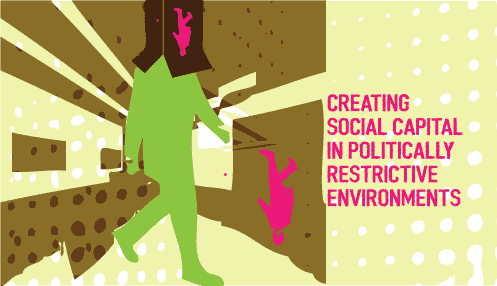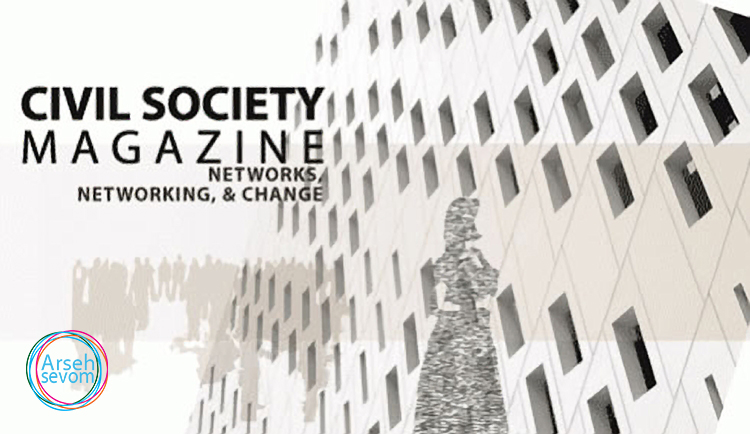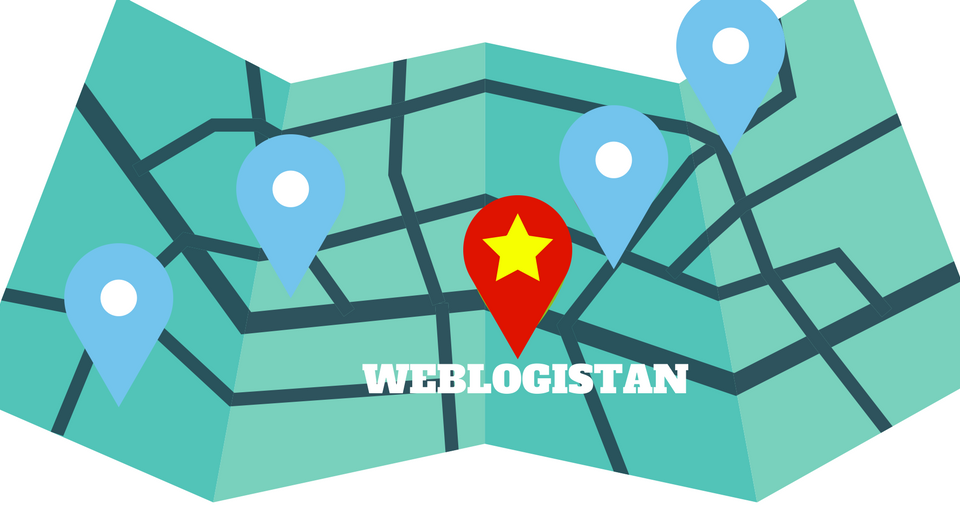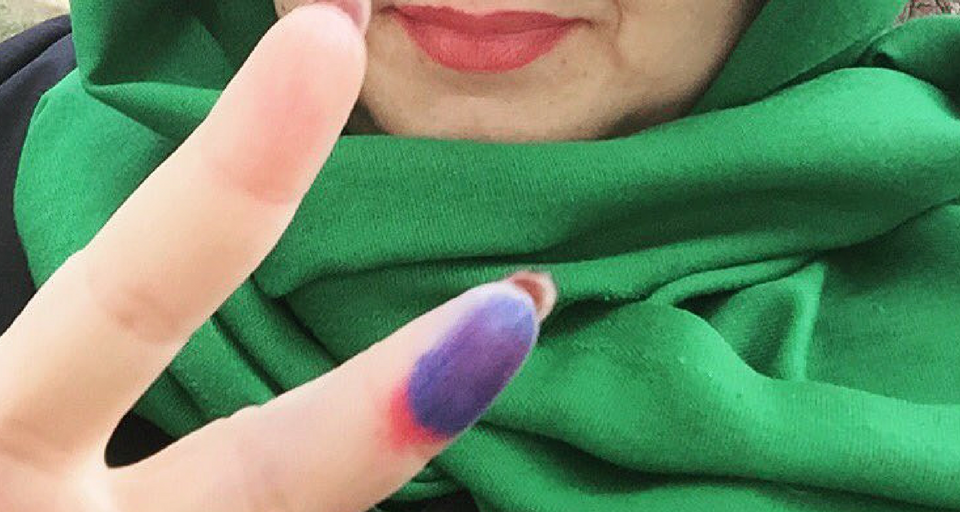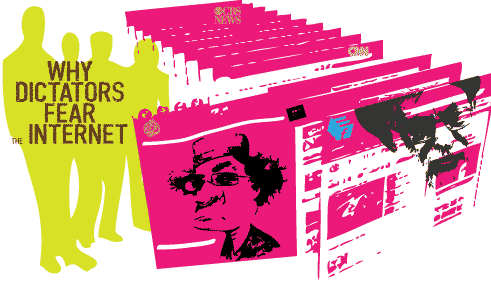
Two Faces of Revolution: (Or, why dictators fear the internet)
March 10, 2011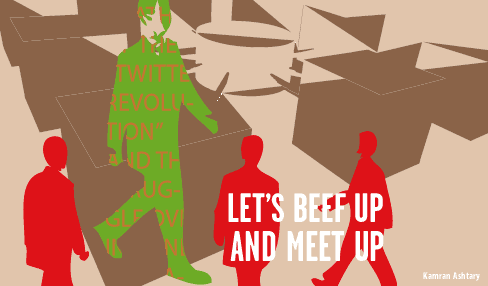
Let’s Beef Up and Meet Up
March 11, 2011Creating Social Capital through a Virtual Association
As a virtual community marked by commentary and online interaction, the Weblogistan has bred interconnectivity among Iran’s virtual dwellers, establishing the notion of a virtual civic association. Blogs have taken political and non-political forms, and have consequently created dialogue and facilitated engagement along both trajectories, as would community associations in the traditional sphere. Contrary to physical realities, Ebrahimi reveals that in most cases, criteria for establishing levels of social trust with Iranian bloggers is based less on physical identity and more on factors like age of weblog, frequency of posts, number of links referring to the blog, and the manner in which the writer interacts with other bloggers.18 All of these characteristics illustrate the way in which virtual society has developed a governing system of rules for interaction and connectivity. Reputations are gained based on a weblogger’s status, weak ties are connected via online linking referrals, and interpersonal trust is gained through repeated virtual interaction. In this sense, the Weblogistan as a virtual association can meet many of the requirements of the physical, traditional association in harnessing social capital and increasing connectivity among society.
Driving Forces Behind Iran’s Virtual Civil Society
Reflecting back on the reformist attempts to re-open the physical public sphere, the momentum used in building up Iran’s virtual civil society can be attributed to the brief liberalization of press and media and the expansion of civil society organizations during the Khatami era. The virtual sphere gained strength while these physical efforts were still active, allowing for continued access to a public platform after the re-closure of public spaces. As Abdo notes, the virtual sphere was critical in harnessing social capital because of its timely ascendance among a newly engaged Iran, serving as an even more powerful platform for self expression free from state regulation and control.19
Additionally, some degrees of trust present in the virtual sphere may be attributed to larger narratives floating throughout the public and virtual space. Iran’s Green Movement which gained legitimacy as the platform for presidential candidate Mir Hossein Mousavi in the June 2009 elections saw a great deal of success through online mediums and mobilization efforts. While many engaged virtually to organize mass demonstrations, there was a degree of trust based on the identification and knowledge of physical movement leaders and supporters seen in the streets and on television. Ascribing these physically verifiable characteristics to online efforts served as a motivating force for creating levels of trust in the virtual sphere at this time.
Iran and Repression of the Virtual Sphere
The virtual sphere offers new avenues for engaging in a public sphere. Yet just as government has tried to suppress activities physical space, it has carried over its authoritarian control to the virtual sphere possessing one of the most extensive web filtering systems in the world.20 In a rating done by the OpenNet Initiative, Iran scored on the extreme end of web filtering in all four web category classifications.21 In restricting public space, the government has on several occasions shut down access to key internet sites and has been able to immobilize political associating around crucial demonstration times. Again as in the public sphere, the state has engaged in internet surveillance techniques to monitor online activities and discussions. Current tactics by the regime include drastically slowing down internet connection speed, restricting access to crucial communication sites for social media, news, and email. Additionally, the Iranian government has taken restriction and surveillance initiatives into their own hands by developing surveillance and censorship technologies under a national capacity.22 Regardless of these strategies to suppress the virtual sphere, Iranians are still actively engaging online, finding ways around government blockades and surveillance. Since the internet lacks the physical element of the public space, censoring and restrictions have been harder to execute, especially with access to proxy servers which circumnavigate government censorship.
Conclusion
In restricted societies like Iran, the virtual sphere serves as an alternative to traditional space first by providing a mode of engagement. Through the use of expressive platforms like weblogging, individuals are empowered to establish a unique identity and further develop their personal and collective ideologies, which would otherwise be forbidden in the physical public sphere. Finally, the virtual sphere as an online community of discussion can foster interpersonal relationships and increase social interconnectivity. The idea of bringing together collective interests and building social capital through virtual sphere is still a relatively new phenomenon, thus the full effects and outcomes of this process are still being understood. Yet from this research, several key conclusions can be made:
Like traditional methods of social organization, the virtual sphere connects weak ties, bridges social capital, and builds stronger bonds. The virtual sphere facilitates an increase in weak ties, which alone are not strong enough to form significant social capital between members of society. The main achievement of the virtual sphere is the ability to foster these weak ties into more formidable, trusting relationships. In the same way traditional community associations pool together weak ties through points of mutual interest, virtual associations bridge these connections under a collective identity, as seen in the Weblogistan.
Social capital is no longer solely a product of the physical public sphere. In regards to the overall state of civil society, it is clear that interpersonal trust can be a produced in the virtual space, without direct physical contact or face to face interaction. Replacing physical contact, establishment of new social norms governing the virtual community has allowed for the creation of social capital via Iran’s Weblogistan. This revolutionary finding suggests that telecommunication technologies which in many ways are less regulated by government have a high likelihood of connecting civic communities in repressed societies. While it is hard to say how this capital will measure when carried back over to the physical realm, the significance of virtual connections lie building capacity of trust among a repressed society.
Social capital from trust networks and political circles can be transferred to, and expanded upon in the virtual sphere. When examining the virtual sphere as a source for creating politically motivated social capital, it very well may be that some of the social networks and degrees of interpersonal trust may rely on a basic, minimal degree of networking done through physical networks. Online organizing and cooperation through virtual platforms may not reflect the point where engagement initially conspired, but rather where physical networks come to organize under the radar of government officials.
While the virtual sphere has limited reach, it is gradually increasing connectivity within society. One of the main problems with the virtual sphere is limiting its audience to only those with access to the internet. While over one third of Iran has internet connectivity, there is still a large gap in societal representation. On a positive note however, enhancing social capital within this smaller target audience via the virtual sphere may create a greater sense of civic confidence and expanded ideological knowledge, which can then be shared in the physical realm though tighter-knit social, family, and trust networks.


